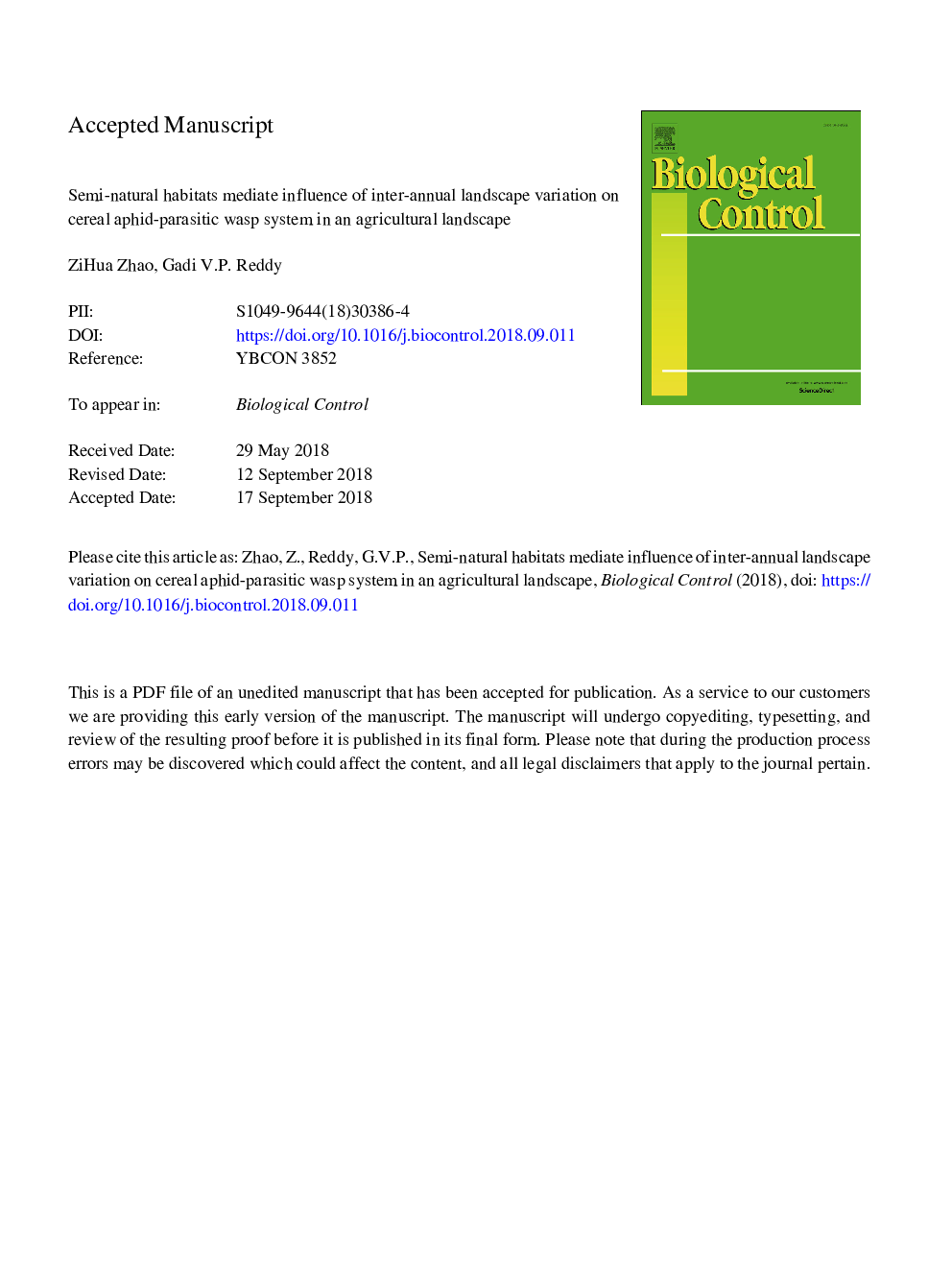| Article ID | Journal | Published Year | Pages | File Type |
|---|---|---|---|---|
| 10223739 | Biological Control | 2019 | 35 Pages |
Abstract
Changes in landscape pattern, including both habitat composition and inter-annual landscape changes, can affect population dynamics, interspecific interactions, and associated biocontrol functions. In particular, natural enemies can be enhanced by increasing percent of semi-natural habitats but impeded by inter-annual landscape changes. Here, we selected 32 landscapes along a gradient of semi-natural habitats and inter-annual landscape changes. The relationship between landscape patterns and cereal aphid-parasitic wasp interactions was then examined to explore the responses of biocontrol function to landscape change over time. We found that increasing percent of semi-natural habitats could enhance the abundance and diversity of parasitic wasps of cereal aphids, while inter-annual landscape change had the opposite effect. The percent of semi-natural habitats in complex landscape has the potential to enhance biocontrol of parasitic wasps on aphids by providing diverse food resources and refuges for natural enemies which in turn suppress crop pests. The asymmetric responses we observed for the four trophic levels provide an important theoretical basis for understanding the cascade effect in food webs, offering opportunities for designing optimal pest management plans that incorporate spatial and temporal variation in agricultural landscape.
Related Topics
Life Sciences
Agricultural and Biological Sciences
Agronomy and Crop Science
Authors
ZiHua Zhao, Gadi V.P. Reddy,
